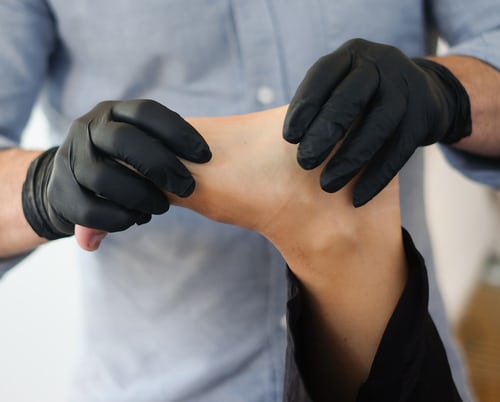How Physical Therapy Can Improve Your Quality of Life
Physical therapy, as a health discipline, not only helps to rehabilitate, condition, or prevent physical injuries, but is also responsible for improving the quality of life of patients comprehensively with personalized treatments and therapeutic support.
Physiotherapy to improve quality of life
There are different health campaigns aimed at physical therapy as a discipline both rehabilitating and integrating people in different areas of daily life. Through the different treatments, general well-being can be improved.
Therapeutic massages
Within physiotherapy, we can highlight massage therapy as one of the most used techniques in different treatments. Whether you are a high-performance athlete, an amateur, or an elderly person, therapeutic massage is applied to parts of the body where discomfort or ailments are felt. For example, cervical, waist, and neck pain, but especially muscle, joint, or tendon pain.
Physical therapy and mental health
Although physical therapy is associated with treatments that seek to solve muscle and motor problems, specialists in this discipline point to it as the key to mental health.
Physical therapy can help improve the condition of people who suffer from depression, anxiety, or other mental health problems. Some statistics say that one in four people will suffer from a mental illness in their lifetime.
Just as certain conditions of a mental nature cause a physical alteration, physiotherapists direct their attention to the body to improve the quality of life of patients with mental illnesses since the change and improvement are noticeable.
Postural hygiene
What we commonly known as “good body posture” contemplates and encompasses all movement protocols, postural protocols aimed at avoiding injuries due to accommodation, adaptation, and pain that appear along the way.
Taking into account the pandemic process that we are going through, we have been forced to change, to reduce our spaces of movement for that of our houses, and to change our habits for other more sedentary ones. One of the results of this process is work at home. Many people changed their offices or other work facilities for living rooms or other arrangements of houses.
Consequently, we can give you some advice that will help you avoid these types of issues (adaptations, accommodations, and all the pain derived from them).
Tip 1
It is oriented to take care of our posture in our work chair. The most important thing is to take care of the verticality of the back concerning the backrest. To do this, we must bring our hips to the rear of our seat and maintain contact between the back and backrest. If you add a step more under our feet, it will facilitate that our vertical posture is much more comfortable. If we have to maintain this posture for more than 30 or 40 minutes, it is important to get up and walk for a few minutes making a transfer and avoid adapting our muscles.
It is also important when one is seated, the use of some devices. Always try to have your arms supported to avoid overloading your shoulders, if possible, keep the devices at eye level, and avoid lowering your head, this can cause increased pain in the stabilizing structure of the neck and cause migraines, headaches, dizziness, and pain, impairing our rest at night.
Tip 2
If you do any activity that requires you to stand, in the same position for long periods, you can use a step about ten centimeters high – it does not matter if it is improvised – and go switching legs and tipping the load towards aside and then the other, preventing the intervertebral joints from loading.
Tip 3
It is important, when lifting weights, to avoid lumbar and cervical flexion. Go down by bending the knees, grasp the object and get up, bringing it closer to the body without losing stability. This will preserve our joints and the musculoskeletal system.
Another guideline when lifting weight is rotation, which can cause compression at the disc level, something that in the medium or long term can cause disc injuries:
- Lumbago
- Hernias
- Sciatica
This can be avoided by placing the support and load on one foot and turning the whole body to one side or the other. If we have to deposit the weight, we will carry out the same process in reverse. We bend our knees; we will lower the weight and we will get up.
These tips are intended to help day-to-day, especially in the middle of the isolation process that we are going through, to make it more bearable to avoid injuries.
Summarizing
Multisensory stimulation, psychomotor therapy, or postural re-education are some of the techniques applied in physiotherapeutic treatments.
Remember that if you or a loved one has a psychomotor problem, you should consult a professional physiotherapist, as they are authorized to offer you rehabilitation or injury prevention treatments accordingly.
Miracle Physical Therapy and Massage Center in Warren, MI, offers you a wide variety of treatments with the best specialists in the field. Book an appointment with them if you need a physical therapist and start taking care of your health.

